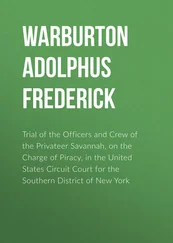Instead of predicting individual events, quantum mechanics is used to predict the statistical distribution of outcomes of ensembles of similar events. This it can do with high precision. For example, a quantum calculation will tell you how many nuclei in a large sample will have decayed after a given time. Or you can predict the intensity of light from a group of excited atoms, which is a measure of the total number of photons emitted. But neither quantum mechanics nor any other existing theory—including Bohm’s—can say anything about the behavior of an individual nucleus or atom. The photons emitted in atomic transitions come into existence spontaneously, as do the particles emitted in nuclear radiation. By so appearing, without predetermination, they contradict the first premise.
In the case of radioactivity, the decays are observed to follow an exponential decay “law.” However, this statistical law is exactly what you expect if the probability for decay in a given small time interval is the same for all time intervals of the same duration. In other words, the decay curve itself is evidence for each individual event occurring unpredictably and, by inference, without being predetermined.
Quantum mechanics and classical (Newtonian) mechanics are not as separate and distinct from one another as is generally thought. Indeed, quantum mechanics changes smoothly into classical mechanics when the parameters of the system, such as masses, distances, and speeds, approach the classical regime. [50] 19. Quantum mechanics becomes classical mechanics when Planck’s constant h is set equal to zero.
When that happens, quantum probabilities collapse to either zero or 100 percent, which then gives us certainty at that level. However, we have many examples where the probabilities are not zero or 100 percent. The quantum probability calculations agree precisely with the observations made on ensembles of similar events.
Note that even if the kalâm conclusion were sound and the universe had a cause, why could that cause itself not be natural? As it is, the kalâm argument fails both empirically and theoretically without ever having to bring up the second premise about the universe having a beginning.
Nevertheless, another nail in the coffin of the kalâm argument is provided by the fact that the second premise also fails. As we saw above, the claim that the universe began with the big bang has no basis in current physical and cosmological knowledge.
The observations confirming the big bang do not rule out the possibility of a prior universe. Theoretical models have been published suggesting mechanisms by which our current universe appeared from a preexisting one, for example, by a process called quantum tunneling or so-called quantum fluctuations. [51] 20. David Atkatz and Heinz Pagels, “Origin of the Universe as Quantum Tunneling Event,” Physical Review D25 (1982): 2065–2067; Alexander Vilenkin, “Birth of Inflationary Universes,” Physical Review D27 (1983): 2848–2855; David Atkatz, “Quantum Cosmology for Pedestrians,” American Journal of Physics 62 (1994): 619–627.
The equations of cosmology that describe the early universe apply equally for the other side of the time axis, so we have no reason to assume that the universe began with the big bang.
In The Comprehensible Cosmos, I presented a specific scenario for the purely natural origin of the universe, worked out mathematically at a level accessible to anyone with an undergraduate mathematics or physics background. [52] 21. Victor J. Stenger, The Comprehensible Cosmos: Where Do the Laws of Physics Come From? (Amherst, NY: Prometheus Books, 2006), supplement H.
This was based on the no boundary model of James Hartle and Stephen Hawking. [53] 22. J. B. Hartle and S. W. Hawking, “Wave Function of the Universe,” Physical Review D28 (1 83): 2960–2975.
In that model, the universe has no beginning or end in space or time. In the scenario I presented, our universe is described as having “tunneled” through the chaos at the Planck time from a prior universe that existed for all previous time.
While he avoided technical details in A Brief History of Time, the no boundary model was the basis of Hawking’s oft-quoted statement: “So long as the universe had a beginning, we could suppose it had a creator. But if the universe is really completely self-contained, having no boundary or edge, it would have neither beginning nor end; it would simply be. What place then, for a creator?” [54] 23. Hawking, A Brief History of Time , pp. 140–141.
Prominent physicists and cosmologists have published, in reputable scientific journals, a number of other scenarios by which the universe could have come about “from nothing” naturally. [55] 24. E. P. Tryon, “Is the Universe a Quantum Fluctuation?” Nature 246 (1973): 396–397; Atkatz and Pagels, “Origin of the Universe as Quantum Tunneling Event”; Alexander Vilenkin, “Quantum Creation of Universes,” Physical Review D30 (1984): 509; Andre Linde, “Quantum Creation of the Inflationary Universe,” Lettere Al Nuovo Cimento 39 (1984): 401–405; T. R. Mongan, “Simple Quantum Cosmology: Vacuum Energy and Initial State,” General Relativity and Gravitation 37 (2005): 967–970.
None can be “proved” at this time to represent the exact way the universe appeared, but they serve to illustrate that any argument for the existence of God based on this gap in scientific knowledge fails, since plausible natural mechanisms can be given within the framework of existing knowledge.
As I have emphasized, the God of the gaps argument for God fails when a plausible scientific account for a gap in current knowledge can be given. I do not dispute that the exact nature of the origin of the universe remains a g p in scientific knowledge.
But I deny that we are bereft of any conceivable way to account for that origin scientifically.
In short, empirical data and the theories that successfully describe those data indicate that the universe did not come about by a purposeful creation. Based on our best current scientific knowledge, it follows that no creator exists who left a cosmological imprint of a purposeful creation.
Intervening in the Cosmos
This still leaves open the possibility that a god exists who may have created the universe in such a way that did not require any miracles and did not leave any imprint of his intentions. Of course, this is no longer the traditional Judeo-Christian-Islamic God, whose imprint is supposedly everywhere. But, perhaps those religions can modify their theologies and posit a god who steps in later, after the Planck time, to ensure that his purposes are still served despite whatever plans he had of creation being wiped out by the chaos at the Planck time.
In that case, we can again expect to find, in observations or well-established theories, some evidence of places where this god has intervened in the history of the cosmos. In previous chapters we sought such evidence on Earth, in the phenomena of life and mind. Here we move to the vast space beyond Earth.
History gives us many examples of unexpected events in the heavens that at first appeared miraculous. In 585 BCE a total eclipse of the sun over Asia Minor ended a battle between the Medes and the Lydians, with both sides fleeing in terror. In probably the first known case of a scientific prediction, Thales of Miletus had predicted the eclipse based on Babylonian records.
Eclipses are sufficiently rare that they are not so regular a part of normal human experience as are the rising and setting of the sun and the phases of the moon. However, they do repeat and behave lawfully, as do these more familiar phenomena. That’s why today we can give the exact date (on our current calendar) of Thales’s eclipse: May 28, 585 BCE. This demonstrates the remarkable power of science to both predict the future and postdict the past. About that time, Nebuchadnezzar II destroyed Jerusalem and carried the Judeans off into exile in Babylonia (where they would pick up their creation myth). The Buddha is said to have attained enlightenment at almost exactly the same time. Confucius would be born a few decades later.
Читать дальше












